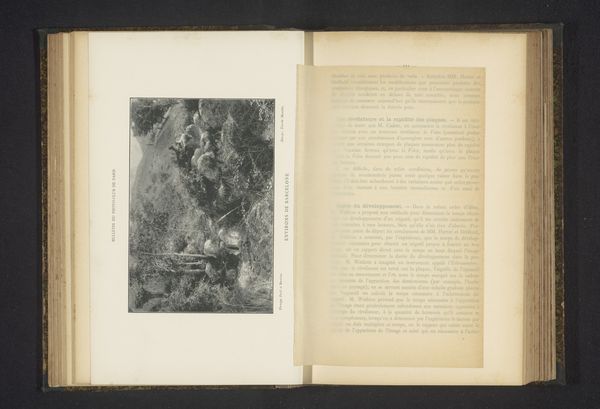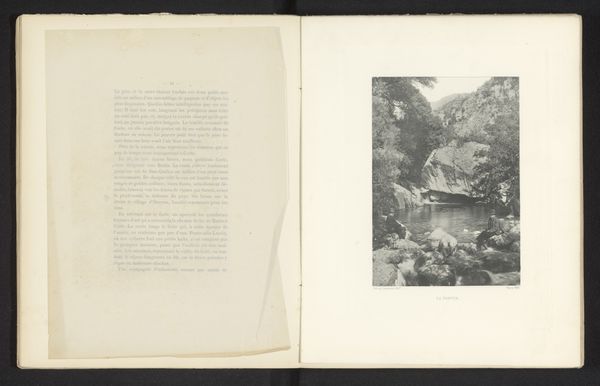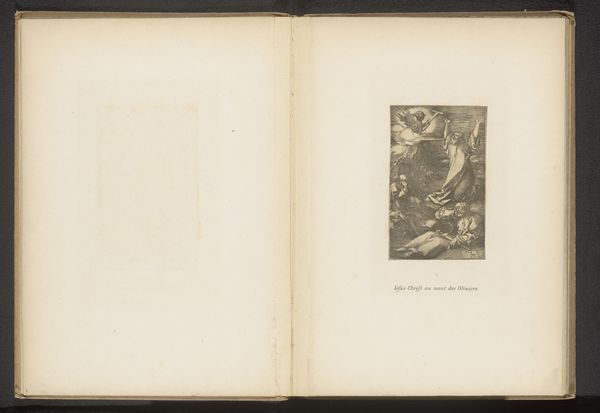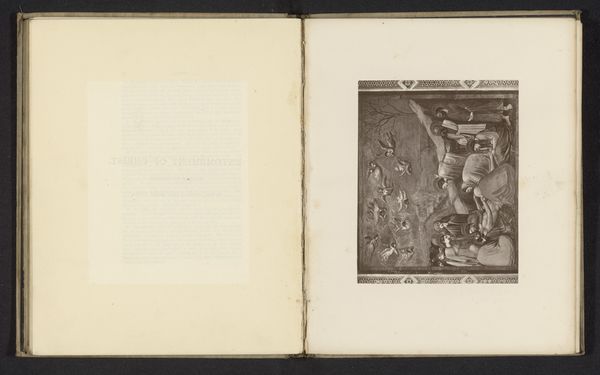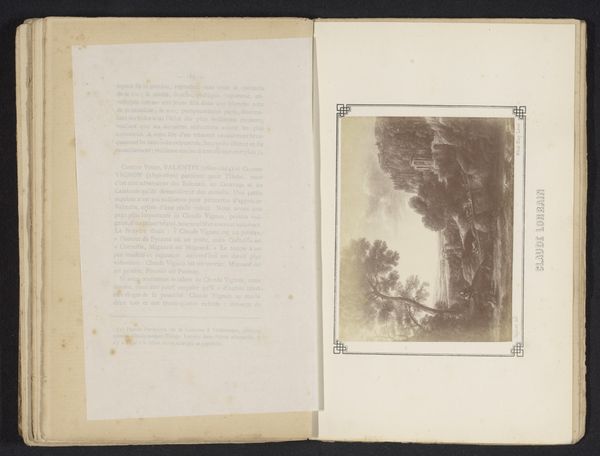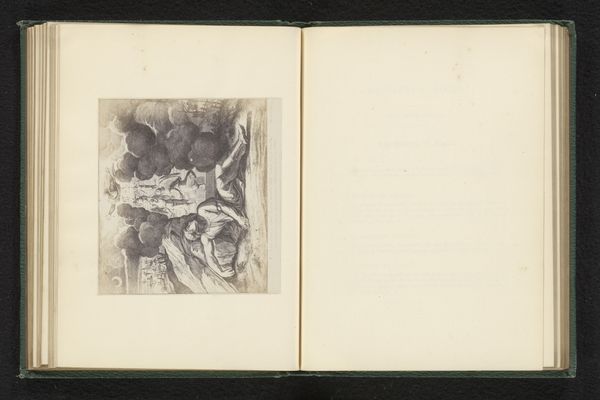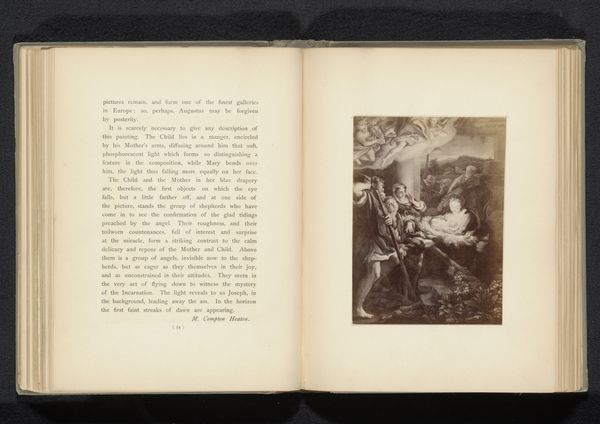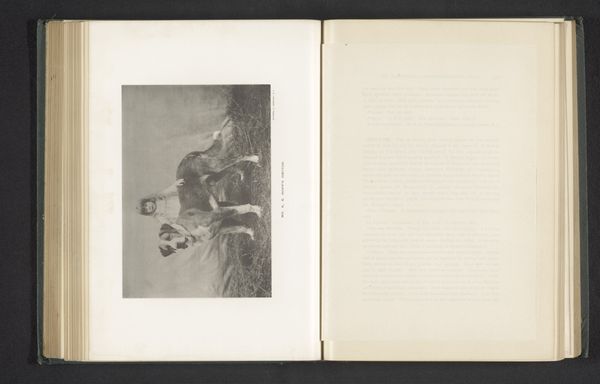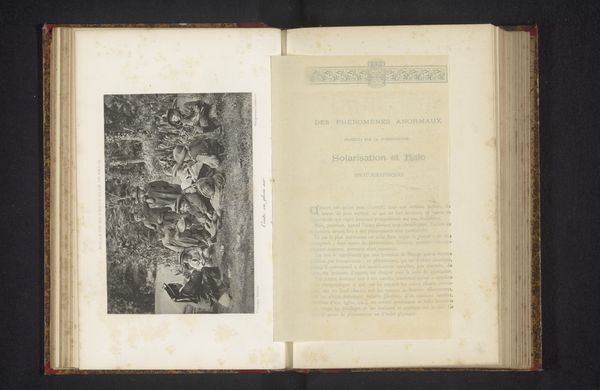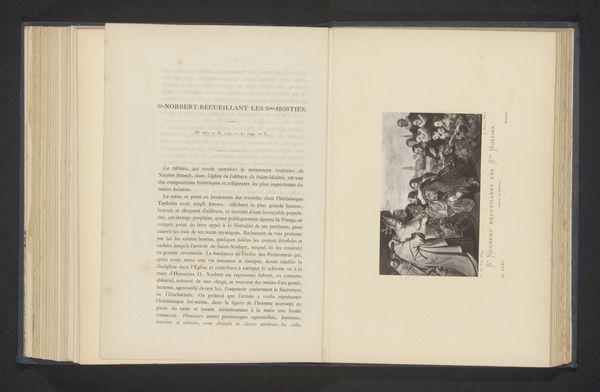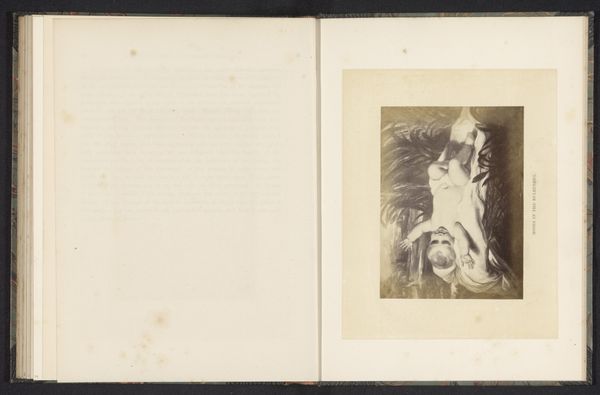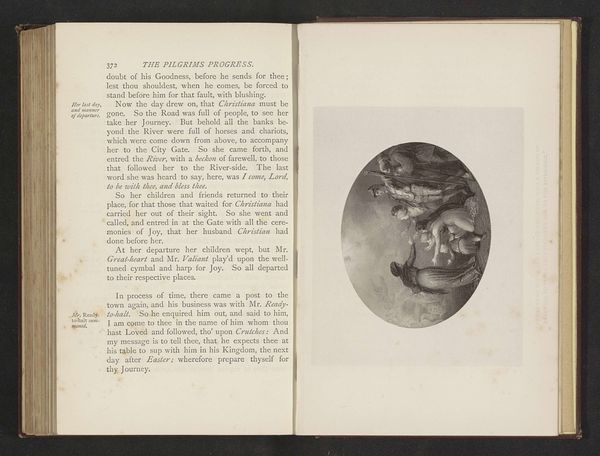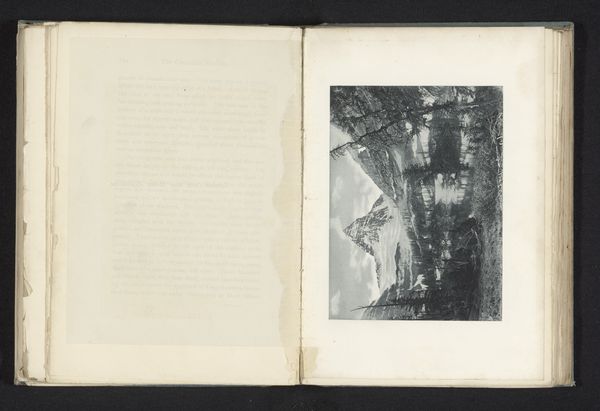
Fotoreproductie van een schilderij van 'De genezing van de bloedvloiende vrouw' door Paolo Veronese before 1879
0:00
0:00
Dimensions: height 80 mm, width 135 mm
Copyright: Rijks Museum: Open Domain
Editor: This is a photo reproduction, dating from before 1879, of Paolo Veronese's painting, "The Healing of the Hemorrhaging Woman". It's a print, possibly an etching on paper. The subdued tones create a sense of reverence, I think. How do you interpret this work? Curator: Well, considering this as a *reproduction* is key. The materiality shifts: from Veronese's paint and canvas, to the photographic print. How does the reproduction alter the perception and value of the original? Photography democratized art, making it accessible but also turning it into a commodity. What was the printing process? How did its makers and owners interact with labor? This all matters as much as the depicted scene. Editor: So, the technique used to create *this* version impacts how we understand Veronese’s original work? It almost flattens the original Baroque painting, stripping it of its vibrant colors. Curator: Precisely! The photograph changes our relationship with it. What decisions were made in selecting *this* work to reproduce? How widely was this circulated and consumed? Who were the consumers? And what were they looking for? By examining the choices in materials and method, we uncover layers of meaning beyond the purely aesthetic. Editor: It's like the reproduction is an entirely new object to examine. Thanks, I’ll definitely think about that perspective more. Curator: Exactly. This challenges the notion of a singular, authentic artwork. Reflecting on how an image changes across its existence highlights the social and historical dimensions inherent to every work.
Comments
No comments
Be the first to comment and join the conversation on the ultimate creative platform.
